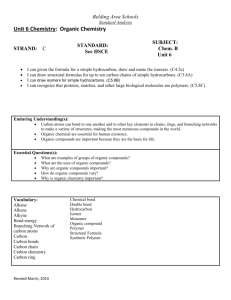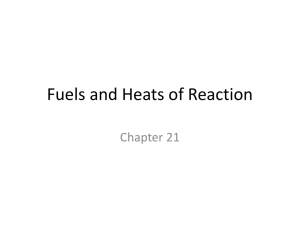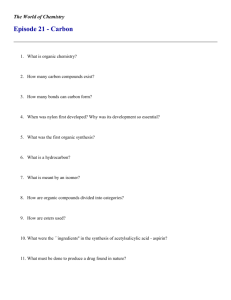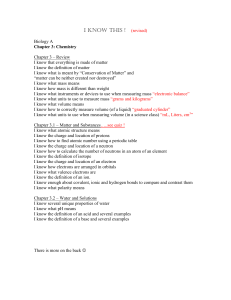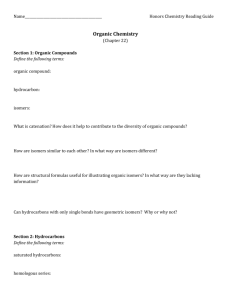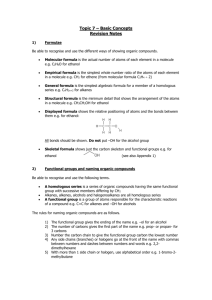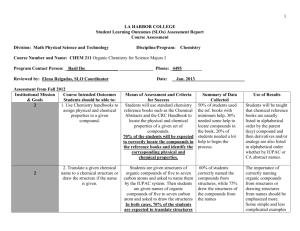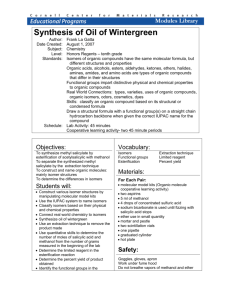honchap22notes
advertisement
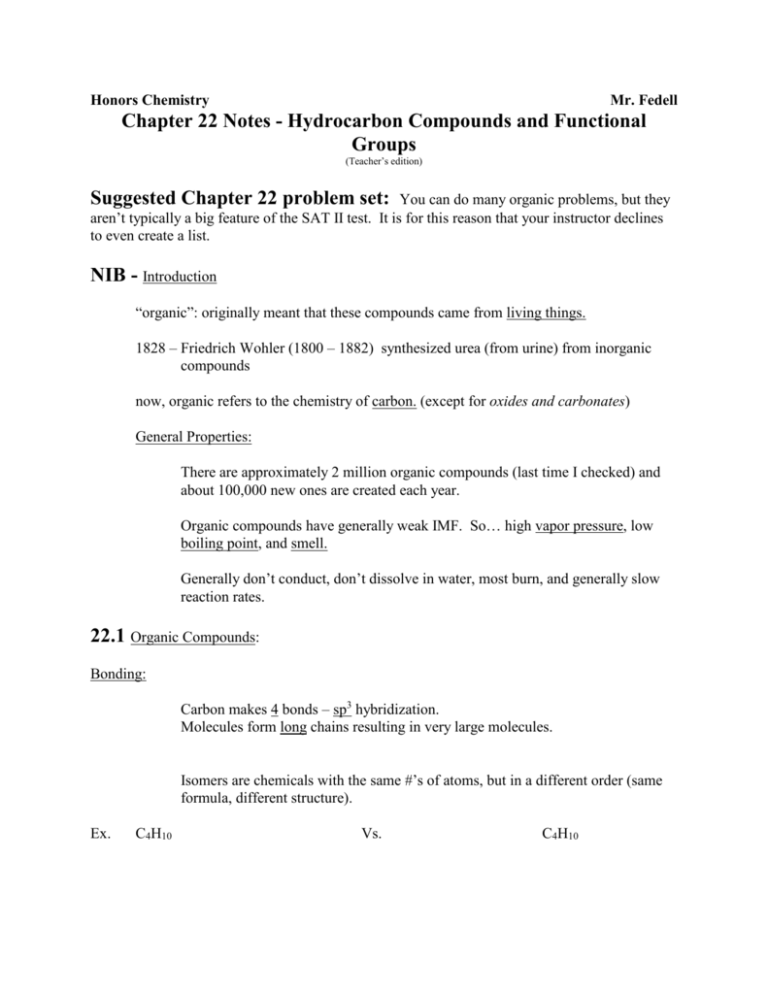
Honors Chemistry Mr. Fedell Chapter 22 Notes - Hydrocarbon Compounds and Functional Groups (Teacher’s edition) Suggested Chapter 22 problem set: You can do many organic problems, but they aren’t typically a big feature of the SAT II test. It is for this reason that your instructor declines to even create a list. NIB - Introduction “organic”: originally meant that these compounds came from living things. 1828 – Friedrich Wohler (1800 – 1882) synthesized urea (from urine) from inorganic compounds now, organic refers to the chemistry of carbon. (except for oxides and carbonates) General Properties: There are approximately 2 million organic compounds (last time I checked) and about 100,000 new ones are created each year. Organic compounds have generally weak IMF. So… high vapor pressure, low boiling point, and smell. Generally don’t conduct, don’t dissolve in water, most burn, and generally slow reaction rates. 22.1 Organic Compounds: Bonding: Carbon makes 4 bonds – sp3 hybridization. Molecules form long chains resulting in very large molecules. Isomers are chemicals with the same #’s of atoms, but in a different order (same formula, different structure). Ex. C4H10 Vs. C4H10 The # of isomers increases with the number of carbon atoms – C1, C2, C3 – 1 isomer, C4 – 2 isomers, C15H22 – 400 isomers 22.2 – Hydrocarbons Hydrocarbons – these molecules contain Hydrogen and Carbon ( Uh… hence the name) open chain (straight): branch chain: closed chain (cyclic): saturated – all single bonds unsaturated – double or triple bonds Hydrocarbon Type Alkanes Alkenes Alkynes Aromatics Bonds Single Double Triple Rings Examples Propane Ethene Ethyne (acetylene) Cyclopentane Other examples: methane, ethane, propane, butane, pentane, hexane, heptane, octane, nonane, decane Aromatic Hydrocarbons – Hydrocarbon Rings cyclohexane benzene 22.4 Organic Reactions 1. polymerization – when simple molecules join to form long chains natural polymers – cotton, wool, silk, rubber synthetic polymers – plastic, nylon, rayon 2. Addition reactions adding halogens is called halogenation adding hydrogen is called hydrogenation alkanes: alkenes: alkynes: C 2 H6 + Cl2 C2H5Cl + HCl C 2 H6 + 2 Cl2 C2H4Cl2 + 2 HCl C 2 H6 + H2 NR C 2 H4 + Cl2 C2H4Cl2 C 2 H4 + 2 Cl2 C2H3Cl3 + HCl C 2 H2 + Cl2 C2H2Cl2 C 2 H2 + 2 Cl2 C2H2Cl4 C 2 H2 + 3 Cl2 C2HCl5 + HCl note – you can’t hydrogenate an alkane ( why? It’s already saturated) – this is shown in the examples above note – you can hydrogenate unsaturated compounds, however examples of this are not shown above don’t forget combustion…. “when you just say “CHO”, you make…..CO2 and H2O 22.3 Functional Groups Name of functional group General formula Name/Formula alcohol methanol carboxlyic acid ethanoic acid aldehyde methanal ketone propanone ether diethyl ether ester CH3COOCH3 Picture NIB – Naming Cycloalkanes and Organic Halides Alkyl halides These are important compounds in organic synthesis reactions. For the purposes of nomenclature the halogens F, Cl, Br, I are treated as fluoro (not flouro), chloro, bromo and iodo groups. Name: Draw: 2,2,3 – tribromopentane 1,2,2,5 - tetrachlorooctane 1,1-diiodo-2-methylprop-1-ene 2-chloro-2-fluoro-3,3-dimethylhexane Example: Given the formula C2H2Cl2 draw two isomers and name them both. Cyclic alkanes 1) Name the longest carbon chain in a ring 2) Add the prefix – “cyclo” Name: Draw: Cyclohexene 1,2 – dimethylcyclopropane 5-chloro-2-methylcyclohept-1-yne


